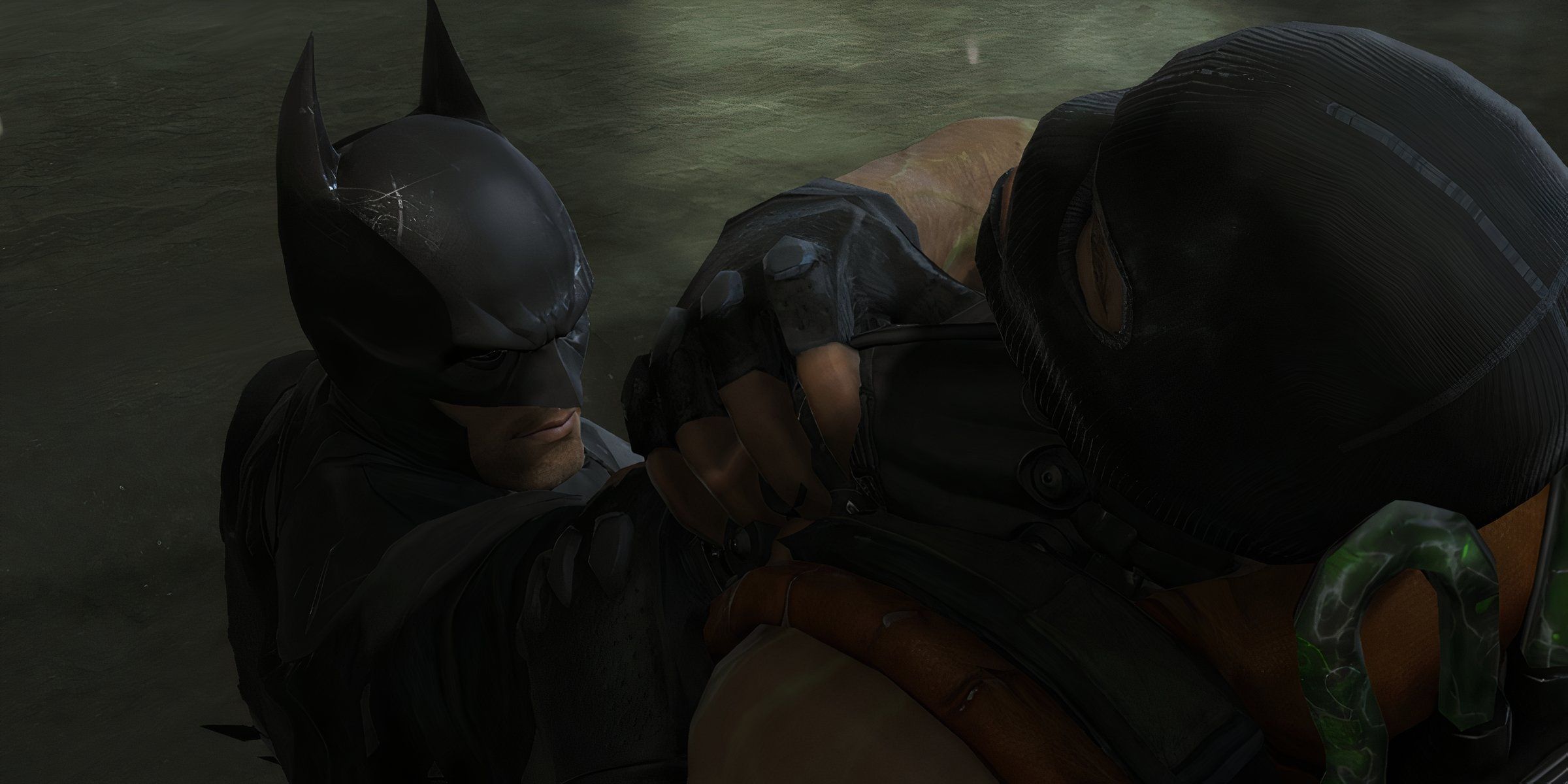Batman has apprehended dozens of villains in the Arkhamverse with more than a few of them recurring in multiple installments. Joker has obviously been a persistent thorn to embellish how big of a nuisance he is, for instance, and the Riddler and his informants have somehow always managed to construct the most elaborate traversal challenges and environmental puzzles for Batman to solve. Therefore, if an antagonist has shown up in at least two games and was then absent in another, it instantly raises questions about their whereabouts and demands lore to explain what they’ve been up to. Batman: Arkham Shadow is a great follow-up to Batman: Arkham Origins and Batman: Arkham Origins Blackgate, and it answers some of these questions while raising its own.
One of Batman: Arkham Shadow’s less explicit Easter eggs is that Killer Croc can be found in a Blackgate Prison cell, though only his massive skeleton x-ray is seen via the unprompted use of Detective Mode. Plus, with a frail, Venom-less Bane at the root of Origins Blackgate’s plot, it’s unclear where he’s at or what he was wanted by ARGUS for. Cut to Suicide Squad: Kill the Justice League, a game taking place roughly 14 years later, and the whereabouts of certain characters are all but unknowable. Indeed, Bane and Killer Croc are perhaps the easiest Arkhamverse antagonists to pin down morally and yet they have both been given traumatic and sympathetic experiences and deserve to be represented again in future Arkham games.

Related
Batman: Arkham Shadow Holds Origins and Blackgate Near and Dear to Its Heart
As an interconnected bundle, Batman: Arkham Shadow completes a trilogy between it, Batman: Arkham Origins, and Batman: Arkham Origins Blackgate.
The Arkhamverse’s Bane is a Mercenary Turned Venom-Addict Vegetable
Bane and Killer Croc have similarly humble beginnings in the Arkhamverse, particularly Batman: Arkham Origins. Bane is a mercenary who Batman is at least minorly familiar with and who arrives in Gotham City to take on the $50 million bounty on Batman’s head. Interestingly, Killer Croc is also described as one of Black Mask’s eight assassins despite only circumstantially coming across Batman during the opening Blackgate riot and never being a threat in Origins thereafter.
Rather, Bane is a main antagonist in Batman: Arkham Origins and is intriguing as he’s adamant about pressuring Batman to take a life, even if it’s Bane’s own as part of a gracious warrior’s death and succeeding in having Batman concede his moral code.
In doing so, Bane resorts to taking an experimental form of Venom called TN-1—later developed as the weaponized Titan in Batman: Arkham Asylum—which turns the muscle-bound tactician into a hulking monster. Batman subdues Bane by zapping him with electricity that evidently fries not only his memory but also his greater mental acuity, rendering him the witless oaf that he’s depicted as in Batman: Arkham Asylum and Batman: Arkham City. Therefore, Origins is a tragic backstory for Bane as it shows how intimidating and intelligent he used to be versus the baser figure he’s been reduced to.
Bane hasn’t been seen since City, but his gear makes an Easter egg appearance in Batman: Arkham Knight that suggests he’s returned to Santa Prisca. If so, it seems as if Bane may never have more explicit closure than that. But, if a future Arkham game takes place after Suicide Squad: Kill the Justice League, it would be wonderful to get clarification on his whereabouts and perhaps even cement the finality of his story if he is never intended to return with a significant role.
The Arkhamverse’s Killer Croc is an Enforcer Turned Lab Rat
While Bane’s tragic downfall occurs early in the Arkhamverse timeline, Killer Croc’s happens late. In Origins, Croc is given the honor of being the first boss fight players experience and, once apprehended, Batman and Alfred share sympathetic sentiments at the Batcave about Croc’s radical form of atavism. Croc is relatively more humanoid in Origins as Black Mask‘s bodyguard, and he’s then seen roughly eight or nine years later in Asylum and appears far larger with much more terrifyingly monstrous facial features.
Croc also has an Easter egg cameo in City that players can trigger in the sewers.
It’s not until Knight’s Season of Infamy DLC, particularly its Beneath the Surface episode, that Croc’s tragedy occurs, though it’s all the more tragic as it’s not self-induced. Players learn that, while he was imprisoned on the Iron Heights Penitentiary airship, Croc was involuntarily experimented on and tortured by Quorum and Warden Ranken.
No longer is Waylon Jones a henchman archetype as his mutated appearance is entirely animalistic, especially with a long tail that drags behind his misshapen body, and while he maintains an indiscriminately hostile outlook it’s impossible not to feel bad for how he was mistreated. Croc being an antagonist in a future Arkham game could risk diluting how much sympathy he earned at Iron Heights, but it’d still be terrific to receive closure on his character and possibly see if his mutation has alleviated or worsened.
Bane and Killer Croc, both beefy brutes who are far from their prime and have become rather poignant in their interpretations, would be fantastic to have back in the Arkhamverse’s future if only to close the book on them. There’s a chance they could return with reinvigorated villain roles, and yet such recourse might undo how sympathetic and tragic their stories have become in the grand scheme of the Arkhamverse with full context made available, just like how suddenly having Mr. Freeze back as an antagonist would be cruel and grossly undermine his development.













Leave a Reply